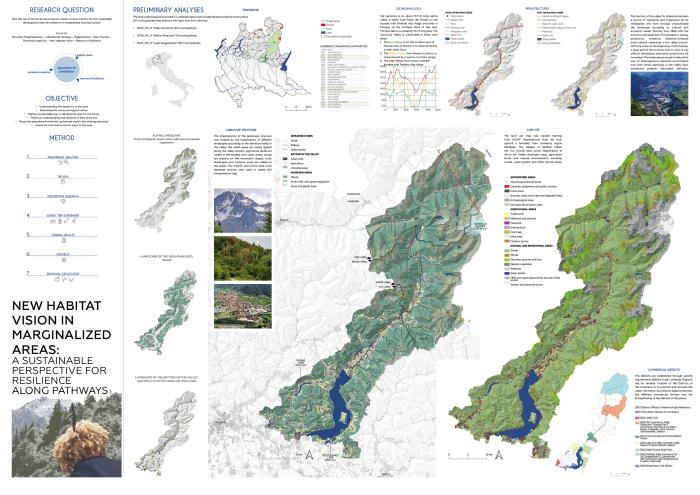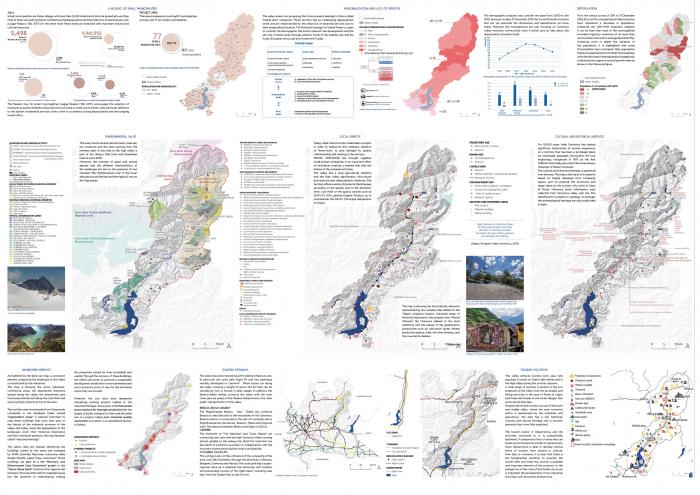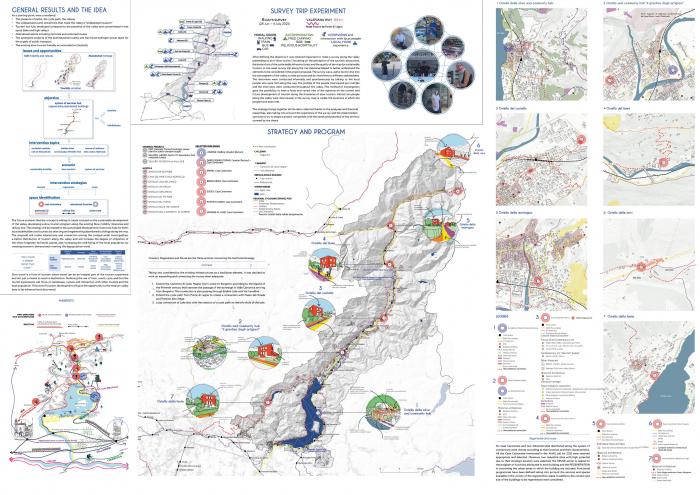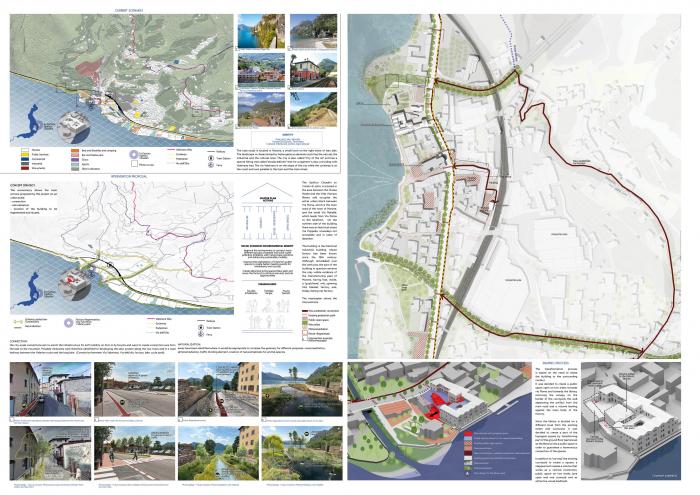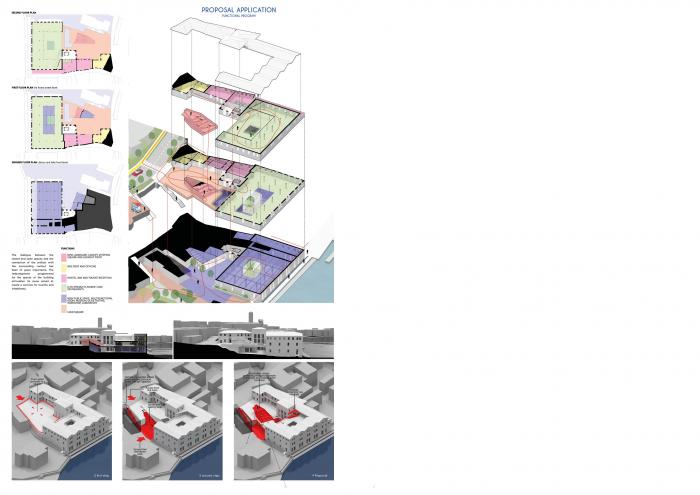Structural handicaps, lack of services and depopulation problems are keywords that define the so-called "internal areas" which represent the 70% of the Italian territories. On the other hand, these territories have great potential thanks to their traditions, culture and naturalness. The idea is to give new life to the abandoned heritage along soft mobility itineraries, to trigger the slow tourism, to create services and to give economic input aimed at the resilience of these peripheral areas.
-“Valle Camonica” (40 municipalities)
- “Sebino Bresciano” (9 municipalities)
-“Laghi bergamaschi” (38 municipalities)
The concept is focused on the following municipalities: Marone, Darfo Boario Terme, Breno, Berzo Demo, Edolo, Ponte di Legno, Spinone al Lago
Structural handicaps, lack of services and depopulation problems are the keywords that are used to define the so-called internal areas that represent almost 70% of the Italian territories. On the other hand, these territories have great potential thanks to their traditions, culture, beauty, naturalness, and ancient knowledge. This is the case of the Camonica Valley and Sebino Lake; which can be defined as a widespread museum in a valley that extends for more than 150 km from the lake at the foot of the Prealps to the alps peaks and Adamello glacier. Despite the enormous potential, the valley’s tourism system is backward in comparison with other similar realities and the demographic trend confirms the depopulation. In addition, the industrial sector that has developed largely along the valley floor has its ancient roots that are historically important for the economy of the valley, but today it is perceptible as an element of decay and abandonment. The concept is based on the initial hypothesis of sustainable development of marginalized territory. The application of the concept aims to respond to different needs of the territory, taking into account opportunities and territorial resources to transform the elements of degradation into meeting points and services for different stakeholders. The main objectives of the concept are to give new life to the abandoned heritage, to trigger the development of slow tourism along soft mobility itineraries, to create services for travellers and for the local population and to give economic input to those areas affected by depopulation. The future scenario outlined by the concept project is therefore based on the use of existing territorial resources to give life to a systematic program of interventions aimed at the resilience of these peripheral places with a rich attractive potential.
Please highlight how the concept/idea can be exemplary in this context
The industrial history of the valley has shaped the territory over the centuries. Nowadays the industrial sector hasn’t the necessary characteristics to be the driving sector of the economy, it is also not in line with the vision of sustainable development of the territory and a large part of the factories is now abandoned. At the same time, the area has a lack of services and the presence of many other abandoned structures as a result of the ongoing depopulation trend. On the other hand, there are some interesting soft mobility infrastructures and the touristic vocation represents the key to the future development of the valley. The cycle path “Oglio-Po” and two pathways recently developed in “cammini” run along the valley covering a length of about 140 km that can be traveled by foot or bicycle in daily stages. In addition, the Brescia-Edolo railway connects the valley with the Padana flatland. The concept will be based on sustainability contributing a topical response to the current climatic crisis. The new economic answer for the area is the creation of hubs of services for travelers and the local population transforming the abandoned heritage along the paths. The system of regenerated buildings will provide an opportunity to enhance the paths, through the creation of new slow tourism-friendly hospitality services and at the same time create meeting spaces for local communities and new job opportunities. Moreover, synergic projects and associations already working on abandoned heritage transformation and the transmission of local identity, represent an ongoing action for urban revival that can be linked to the concept. The proposal will create interactions among the crossed small municipalities, a better distribution of tourism along the valley, and will increase the degree of utilization of the often-forgotten territorial capital, also increasing the well-being of the local population, by creating economic demand and inverting the depopulation trend.
Please highlight how the concept/idea can be exemplary in this context
The territory under analysis attracts tourists every year, who populate it mainly on Sebino lake and in the high valley during the touristic seasons. Despite the limited touristic turnout of the lower and middle valley -where the main economic sector is represented by the industries and agriculture- the area has a touristic potential that is not fully exploited. The concept wants to develop a strategy that aims at the recovery of the abandoned buildings along the existing paths to create a new cohesive touristic program that allows discovering the extraordinary excellences of the whole valley. Slow tourism was the sustainable way of travel selected for the concept project because: “Slow travel is deeper rather than wider.” It is based on the concept of speed. It involves traveling for a prolonged period of time at a slow pace, allowing the tourist a deep, authentic, and cultural experience. Moreover, it is focussed on a more cultural and environmentally friendly solution to travel taking into consideration the impacts of travel on the environment, society, and economy. Location, feasibility, and beauty were considered to select the buildings for the regeneration program. The concept identifies 6 “Case Cantoniere” and 2 industrial sites along 150 km. The “Case Cantoniere” are roadside houses characterized by the typical Pompeian red color. Currently, there are about 1244 “Case Cantoniere” throughout Italy, half of which are intended to be operational headquarters of Anas (Azienda Nazionale Autonoma delle Strade Statali), the other are part of the “Recovery and Enhancement Case Cantoniere” project. The call wants to reuse and make the properties owned by Anas accessible and usable through the recovery of these buildings. Thanks to their style the Case Cantoniere are very recognizable buildings that present the same characteristics everywhere in Italy their aesthetics will help the stakeholders in understanding they are part of a cohesive program.
Please highlight how the concept/idea can be exemplary in this context
The concept is based on Slowtourism as the key of future economic development of the valley, however, it will also bring to the area other benefits. The proposal will create interactions among municipalities, a better distribution of tourism along the valley, and will increase the degree of utilization of the territorial capital, also increasing the well-being of the local population. Slow tourism involves the tourist slowing down, and often doing less, in order to gain a deeper understanding of the surroundings, community, and authentic culture. The slow tourist not only contributes with economic value but also by developing a legitimate interest, respect, and consideration for local culture and traditions. Moreover, slow tourism is beneficial for marginalized communities. It can help develop a greater entrepreneurial spirit and decision-making capacity about the future of the region among its inhabitants, the result will then foster community cohesion. The scenario thinks about tourists, local population, and future new people attracted to the area for longer or shorter period. The redevelopment of the buildings will articulate their reuse aimed at both activities that can enhance the local tradition (tasting local products, local products market area), those dedicated to the preservation of the historical and cultural memory of Lake Iseo and the Camonica Valley (thematic museum, tourist reception, and temporary exhibitions) and those related to the creation of a community hub (creating a flexible space that can be used as conference or exhibition space or simply a public urban space). The services hub will also bring some urban transformation in order to connect the context to the buildings and improve the soft mobility with the social and environmental benefits (improve the environment to connect more different groups of people and solve pollution problems with nature base solutions, the exploitation of public spaces to create meeting points for local and touris
Please highlight how this approach can be exemplary
The aim of the strategy is to create a system of service hubs by regenerating abandoned buildings that will link the tourist attractions and the areas of the valley through the itineraries of sustainable mobility, giving new life to the disused industrial heritage. The nowadays marginalized territory of the valley will thus be a place of social, economic, cultural, and ecological innovation as a laboratory for future living spaces. During the process of defining the strategy, three important topics were considered: Resource of Resilience, Territorial Creativity, New Habitat (Schröder et al., 2018). Resilience plays a positive role in social and ecological terms. Combining the territorial resources, a new habitat can be imagined. The touristic aspect is a very vernacular lifestyle that lets some parts of the valley be seasonally overcrowded. The project wants to create new working opportunities and a new touristic style in this area to contribute to the overall ecological sustainability and in terms of resources to be something resilient in terms of the valley’s auto sufficiency, services, and economy. Habitat Vision means that the future scenario is based on an analytical vision of what nowadays is going on in the area and it figures out a new vision to invert the ongoing depopulation trend. The scenario thinks about tourists, local population, and future new people attracted in the area for longer or shorter periods creating something new. New visions mean how to live, work, earn money, produce culture, and how find new relations. Territorial Creativity Wants to address and make good use of everything that is already there, exploring nature, infrastructures and abandoned heritage. Make them part of this creativity and make innovation to live with nature, protect it, use it, and at the same time to have access to the resources and the cultural heritage.
The proposed concept is not a simple regeneration project of a single building or an academic exercise that focuses on a single design aspect. instead, it is a very ambitious proposal that wants to respond to the initial hypothesis of sustainable development of a marginalized territory, trying to interpret it and to take into consideration the existing elements for the creation of something new in response to the problems of the place. Furthermore, the concept starts from a very large scale with the initial analysis, and then gradually outlines a more defined program up to the scale of the building (see the uploaded images). The proposal for the development of slow tourism also differs from that of the practice of mainstream tourism and manages to respond to the need for sustainability and economic feasibility.
The strategy and concept presented are only an illustrative hypothesis in response to the results of the large-scale analyses, which can only be confirmed by detailed feasibility studies of the selected buildings and a synergistic and coordinated programme of action between the various mountain communities aiming at a common objective. Throughout my research I have come across articles and initiatives revolving around the concept proposed in this study. This is a clear indication that the future development of the valley will be based on sustainability and new forms of economy. Hence the new economic answer for the territory is the creation of hub of services transforming the abandoned heritage along sustainable itineraries. Moreover, the synergic projects and associations already working on abandoned heritage transformation and local identity represent an ongoing action for urban revival to be considered. Consequently, research on developing marginalized and fragile alpine communities has ample room for expansion considering this trend. Hence research questions will arise such as finding urban design and architecture solutions to answer to the needs of new citizens while preserving the mountain heritage and identity. Finally, the findings suggest several courses of action on the administrative front to ensure an improvement in rendering this territory. With an infrastructural upgrade and introduction of a more sustainable touristic offer the area can receive the attention of visitors and permanent new citizens it deserves. Greater efforts are needed in exploring innovative collaboration strategies between different stakeholders such as administration, citizens, industrial and economic actors as well as prospective investors.
The concept is considering a vast and heterogeneous territory that has been analyzed in different ways: digital database, statistics, theoretical and historical research. The results helped in defining the "project" area along with the soft mobilities infrastructures. Furthermore, a literature review about the existing national development policies concerning small municipalities helped in defining the goals for the concept and further literature review about tourism helped in understanding what is needed to create sustainable tourism development along the valley. Moreover, an interview with the creators of the "cammini" Pathways helped in better defining the needs and the opportunities related to the possible development of the pathways in touristic roads for the sustainable tourism program. Finally, a one-week survey trip conducted walking along the Via Valeriana helped in defining the strategic points of intervention along the paths. During the survey trip, some stakeholders were interviewed in order to have a participated opinion about the concept program. However, it would be appropriate to propose a serious citizen engagement also involving mayors and associations from the municipalities of the valley. Moreover, the proposed intervention on the 7 buildings is based mainly on conceptual reasoning concerning the choice of functions, their distribution within the existing structure, and the aesthetic, spatial, and symbolic characteristics in the proposal of the spaces to give a concrete idea of the concept program mentioned before. It should be noted that no detailed studies have been carried out on the structure of the buildings and their integrity. It would be appropriate to better investigate their feasibility too.
@Gaini, 2022
Content licensed to the European Union.
